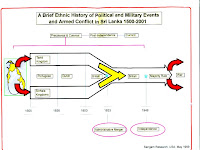A Brief Colonial History Of Ceylon(SriLanka)
Sri Lanka: One Island Two Nations
A Brief Colonial History Of Ceylon(SriLanka)
Sri Lanka: One Island Two Nations
(Full Story)
Search This Blog
Back to 500BC.
==========================
Thiranjala Weerasinghe sj.- One Island Two Nations
?????????????????????????????????????????????????Friday, March 4, 2016
By the time you read this, I’ll be dead
THE CANADIAN KEVORKIAN The author pictured in 1992 at Ross Bay Cemetery in Victoria (Image: Courtesy of John Hofsess)
Between
1999 and 2001, I helped eight people die, including the poet Al Purdy.
Now, as I prepare to take my own life, I’m ready to tell my story
Editor’s note: John Hofsess died at 4:45 p.m. EST on February 29, 2016, as planned, in Basel, Switzerland.
Imet the Québécois filmmaker Claude Jutra in 1963, when he visited McMaster University for a showing of his first feature,À tout prendre. Years later, when I was the film critic atMaclean’s magazine, I visited Jutra on several occasions in Montreal, and he invited me to preview his film Mon oncle Antoine prior
to its release. In 1982, he read an idealistic article I’d written
about assisted dying. He had been diagnosed with early-onset Alzheimer’s
and wanted help to end his life, but I put him off. I couldn’t bring
myself to convert my words into actions. Jutra’s condition deteriorated
until at last he had to act alone. On November 5, 1986, he leapt from
the Jacques Cartier Bridge in Montreal. Punishing winter weather
surrounded him: fog, icy rain and snow. The desperation of his suicide
altered me in ways I did not fully realize at the time.
Five years after his death, I established the Right to Die Society of
Canada. I was a reluctant activist, and initially, I invested my energy
in law reform. In 1992, the Society initiated a challenge under the
Charter of Rights and Freedoms on behalf of Sue Rodriguez, the Victoria
woman who had been diagnosed with ALS at age 41. We attempted to strike
down Section 241(b) of the Criminal Code, which made assisted suicide a
criminal offence. The Supreme Court of Canada rejected the challenge in a
5–4 ruling. It would be many years before it would accept a comparable
challenge—I foresaw a painful future for thousands of Canadians.
I was horrified anew in 1999 when the gifted conductor Georg Tintner,
who was dying from a rare form of melanoma, jumped from the balcony of
his 11th-floor apartment in Halifax to end his agony. Many Canadians
would hear such news, shake their heads, utter a few sympathetic
platitudes and move on. But I couldn’t just sit back and wring my hands.
That year, I went from advocating for assisted suicides to facilitating
them. Let’s not mince words: I killed people who wanted to die.
Nothing in my background prepared me for what needed to be done. I’d
heard numerous horror stories about people who relied upon advice from
do-it-yourself suicide books, such as Derek Humphry’sFinal Exit: The Practicalities of Self-Deliverance and Assisted Suicide for the Dying. He
prescribed a plastic bag over the head to hasten death. That technique
often created so much discomfort that many people failed.
I created an underground assisted death service that offered innovative
non-medical methods of dying to Society members. My partner was Evelyn
Martens, a retired office worker who’d watched her brother die in agony
from bone cancer (she died in 2011). Following Jack Kevorkian’s example,
we didn’t require clients to pay for our services. We operated on the
Robin Hood principle: members who could afford to cover the costs of our
illegal operations helped compensate for those who couldn’t.
All of this took place in secret. Between 1999 and 2001, we provided
eight members of the Society with assisted deaths. The celebrated
Canadian poet Al Purdy was one of them, and he authorized me to publish
this posthumous account. The question of when, he left to my discretion.
“You write it. You arranged everything. Wouldn’t be possible without
you,” he said in his famous gravelly voice. “I don’t mind a bit being
labelled a suicide.”


